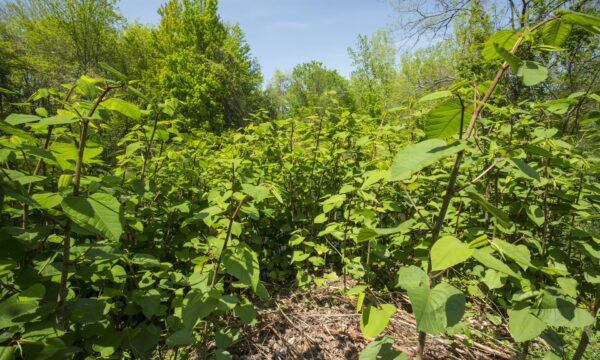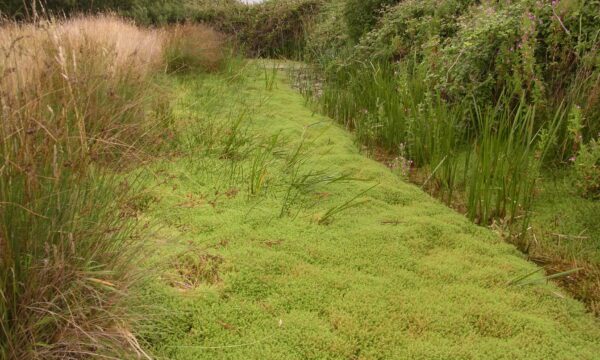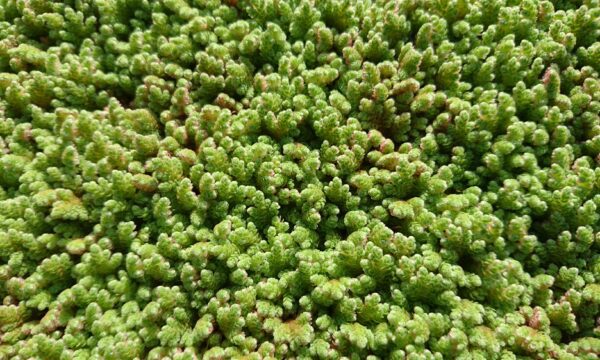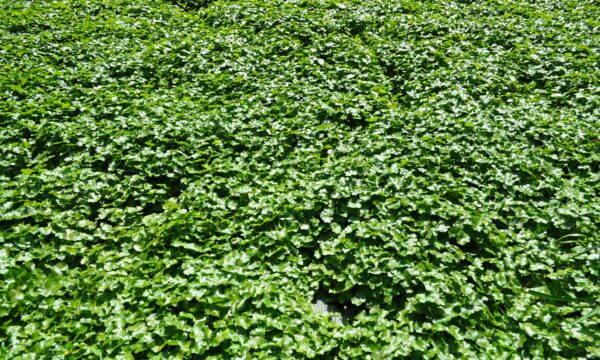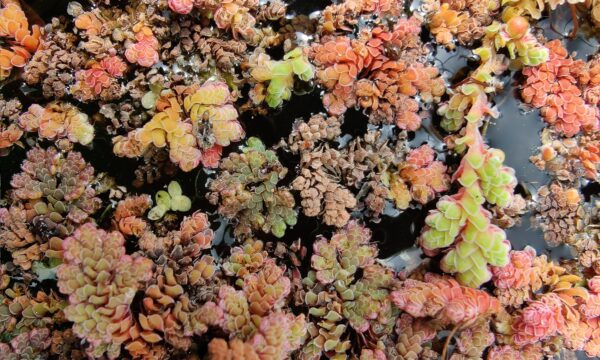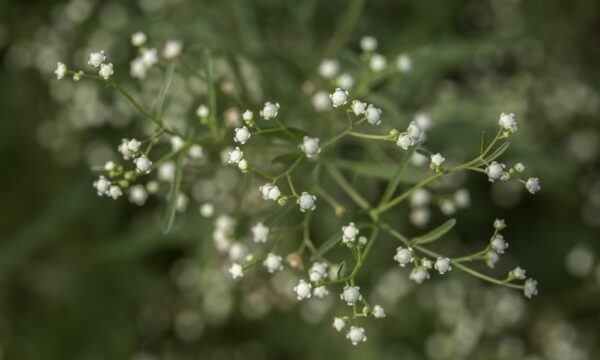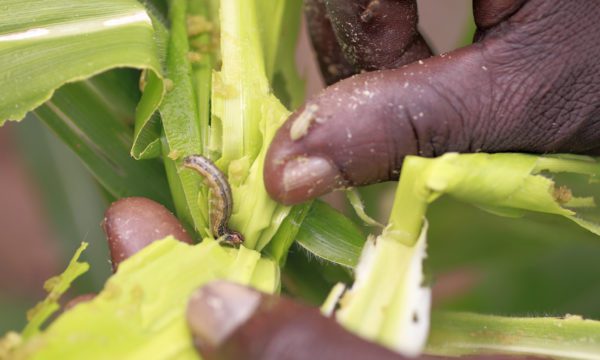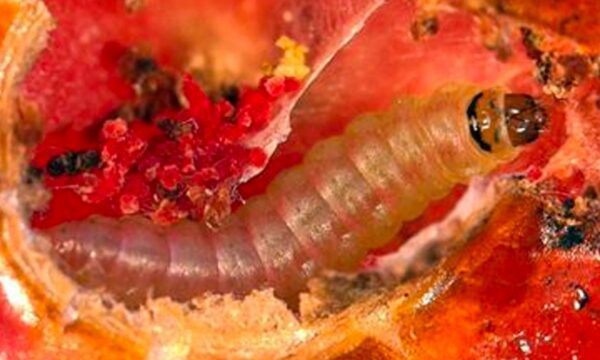The problem
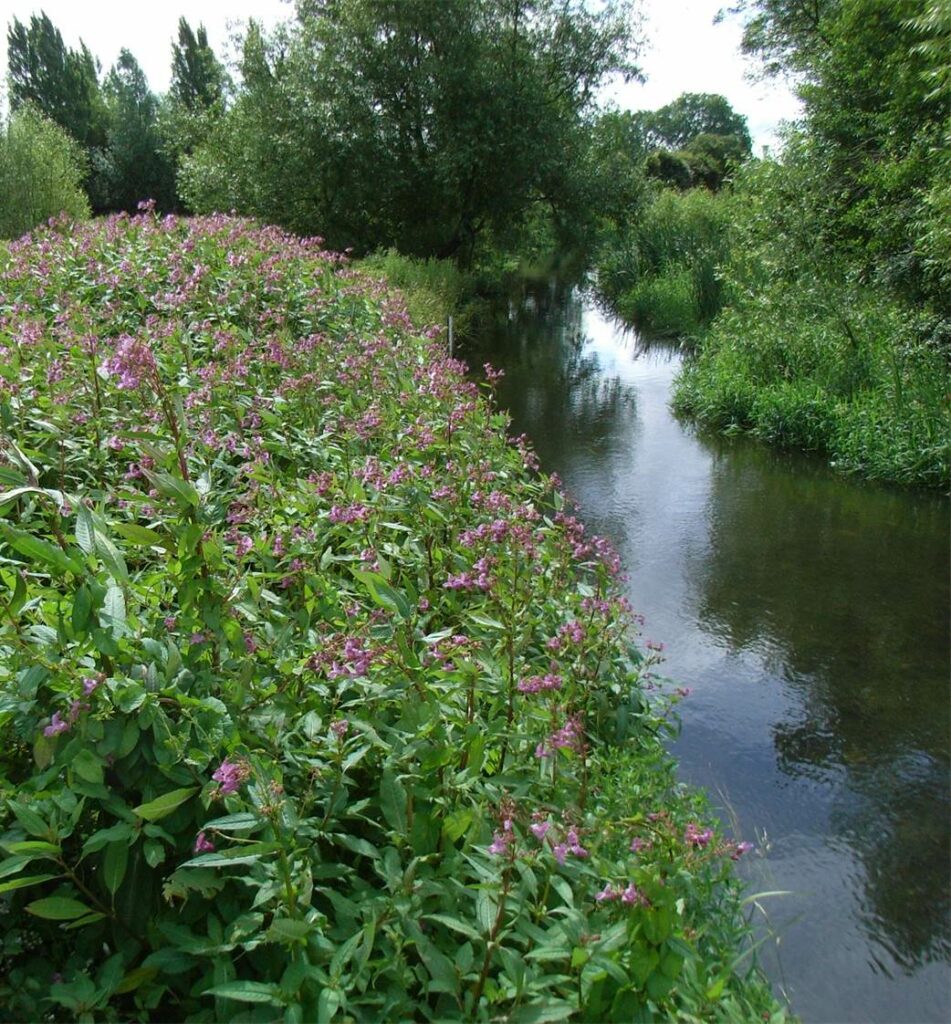
Himalayan balsam (Impatiens glandulifera) has rapidly become one of the UK’s most invasive weed species, colonising river banks, waste ground and damp woodlands. It successfully competes with native plant species for space, light, nutrients and pollinators, and excludes other plant species, thereby reducing native biodiversity.
As an annual plant, Himalayan balsam dies back in the winter and, where the plant grows in river systems, can leave river banks bare of vegetation and liable to erosion. Dead plant material can also enter the river, increasing the risk of flooding.
Traditional control methods are currently inadequate in controlling Himalayan balsam in the UK. This is often because the plant grows in inaccessible areas or sites of high conservation value where chemical and/or manual control (weeding) is not an option. Land managers often give up when faced with controlling Himalayan balsam over a large area due to the inaccessible places where the plant grows.
The project
Between 2006 and 2010, surveys were carried out throughout India and Pakistan, the plant’s native range, to identify natural enemies that could be considered as biocontrol agents in the introduced range. Many of the natural enemies, both fungal and arthropod species collected and identified during the surveys, were rejected as unsuitable biocontrol agents as they were able to attack other species closely related to Himalayan balsam.
One natural enemy, a rust fungus, which was seen causing significant damage to Himalayan balsam, was exported to our quarantine facility in the UK in 2010 to undergo extensive safety testing. It was identified as Puccinia komarovii var. glanduliferae – an autoecious (completing its entire life cycle on a single species), macrocyclic (five spore staged) rust fungus, which infects the stem of seedlings just as they are germinating during the spring and then goes on to infect the leaves of Himalayan balsam throughout the growing season.
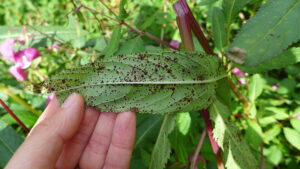
Research to date
The safety of the Himalayan balsam rust was assessed following strict internationally recognized testing procedures. A test plant list consisting of 74 species and an additional 10 varieties of three widely grown ornamental species was compiled. The list included closely related UK-native species, popular ornamental plants and economically important crop species.
Results were compiled into a pest risk analysis, which was submitted to UK regulators and the European Commission’s Standing Committee on Plant Health. In 2014, Defra ministers approved the rust for release making this the first fungal biocontrol agent to be released against a weed in the European Union.
The rust has been released at more than 50 sites across England, Wales and Scotland. The releases take place with assistance from local action groups and landowners who are trained in the monitoring and rust release protocol.
At sites that are fully susceptible to this particular type of fungus, the rust is performing well, adapting to local climatic conditions and spreading from the initial area of release. Good leaf infection is frequently observed, and the rust is able to survive the winter and establish populations in stands of Himalayan balsam the following year.
CABI holds two different strains of the rust. However, not all populations of Himalayan balsam in the UK are susceptible to these strains and additional strains need to be identified from the native range.
To assist with this work, a molecular study was carried out. It identified that Himalayan balsam had been introduced into the British Isles on more than one occasion, from multiple locations within the native range. The study identified key regions in the native range to survey for additional rust strains. These are more likely to be fully compatible with UK populations that are currently showing resistance.
The aim is now to collect new strains from the native range to test against unsusceptible populations, while also continuing to release and establish the rust at susceptible sites.
Rust life cycle
This rust has a complicated life cycle with five different spore stages or types, all genetically the same and all affecting Himalayan balsam.
The first visible spore stage in the spring brings the yellow aeciospores (spores caused by the rust), borne in tiny cups, which erupt from the stem of seedlings below the seed leaves. Infected plants are clearly identified as the infection causes the stem to elongate, warp and bend as the rust develops within the plant, feeding on the living stem tissue. The aeciospores are spread by wind and rain, and infect the leaves of Himalayan balsam.
The aeciospores enter the leaf through the pores or ‘stomata’ in a film of water, produced by dew or rain, and develop within the leaf, feeding on the internal cells. No symptoms for this infection are visible until chlorotic spots are seen on the leaves after seven or eight days.
Then, after about 14 days, brown pustules containing the second spore types, urediniospores (thin walled spores), erupt from the underside of the leaf. These spores are the ‘cycling’ stage and cause significant damage to the plants by reducing the photosynthetic area of plants. Many generations of urediniospores are produced on the plants throughout the late spring and summer. These spores are wind borne – this is the dispersal phase of the life cycle – allowing the rust to move between populations of the weed. Spores are capable of moving many miles in air currents.
Following the onset of the autumn, the leaves of Himalayan balsam begin to deteriorate with age, which induces the formation of nearly black teliospores instead of urediniospores. The teliospores herald the third (resting and overwintering) spore stage of the rust, with thick walls and dark pigment to help them resist adverse environmental conditions. They have evolved this way so that the rust can survive in the winter months when Himalayan balsam has died back. Teliospores embedded in the leaves, fall to the ground to become part of the leaf litter, where they overwinter until the following spring, along with the seeds of the Himalayan balsam.
With the onset of the spring and an increase in temperature, Himalayan balsam seedlings germinate. The increased temperature also induces the germination of the teliospores. The teliospores germinate to produce the fourth spore stage, basidiospores, which are projected from the teliospore onto the seedling just as they are germinating.
The basidiospore infects the hypocotyl or stem of the seedling Himalayan balsam and grows within the developing plant to produce the fifth spore type, spermagonia which erupt from the epidermis of the stem. The spermatia produced in the spermagonia cross with compatible spermagonia structures to induce the formation of the aeciospores and the whole cycle repeats.
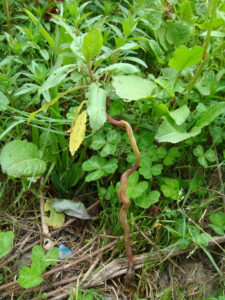
Project-specific articles, reports, papers
Ellison, C. A., Pollard, K. M., & Varia, S. (2020). Potential of a coevolved rust fungus for the management of Himalayan balsam in the British Isles: first field releases. Weed Research, 60(1), 37–49. doi: 10.1111/wre.12403
Kurose, D., Pollard, K. M., & Ellison, C. A. (2020). Chloroplast DNA analysis of the invasive weed, Himalayan balsam (Impatiens glandulifera), in the British Isles. Scientific Reports, (0123456789), 1–12. doi: 10.1038/s41598-020-67871-0
Pollard, K. M., A. C. Gange, M. K. Seier, and C. A. Ellison (2022) A semi-natural evaluation of the potential of the rust fungus Puccinia komarovii var. glanduliferae as a biocontrol agent of Impatiens glandulifera. Biological Control, 165
Pollard, K., Varia, S., Ellison, C., & Gange, A. (2019). Biological control : a novel approach to managing Himalayan balsam a troublesome invader in the UK. Conservation Land Management, 17(1), 10–15.
Pollard, K.M., Varia, S., Seier, M.K. and Ellison, C.A. (2021). Battling the biotypes of balsam: The biological control of Impatiens glandulifera using the rust fungus Puccinia komarovii var. glanduliferae in GB. Fungal Biology, 125 (8) 637-645
Tanner, R. A., Ellison, C. A., Seier, M. K., Kovács, G. M., Kassai-Jáger, E., Berecky, Z., Varia, S., Djeddour, D., Singh, M. C., Csiszár, Á., Csontos, P., Kiss, L. & Evans, H. C. (2015). Puccinia komarovii var. glanduliferae var. nov.: a fungal agent for the biological control of Himalayan balsam (Impatiens glandulifera). European Journal of Plant Pathology, 141(2), 247–266. doi: 10.1007/s10658-014-0539-x
Tanner, R. A., Pollard, K. M., Varia, S., Evans, H. C., & Ellison, C. A. (2015). First release of a fungal classical biocontrol agent against an invasive alien weed in Europe: biology of the rust, Puccinia komarovii var. glanduliferae. Plant Pathology, 64(5), 1130–1139. doi: 10.1111/ppa.12352
Tanner, Robert A., Jin, L., Shaw, R., Murphy, S. T., & Gange, A. C. (2014). An ecological comparison of Impatiens glandulifera Royle in the native and introduced range. Plant Ecology, 215(8), 833–843. doi: 10.1007/s11258-014-0335-x
Tanner, Robert A., Varia, S., Eschen, R., Wood, S., Murphy, S. T., & Gange, A. C. (2013). Impacts of an invasive non-native annual weed, Impatiens glandulifera, on above- and below-ground invertebrate communities in the United Kingdom. PloS One, 8(6), e67271. doi: 10.1371/journal.pone.0067271
Shaw, Richard H., Ellison, C. A., Marchante, H., Pratt, C. F., Schaffner, U., Sforza, R. F. H., & Deltoro, V. (2018). Weed biological control in the European Union: from serendipity to strategy. BioControl, 63(3), 333–347. doi: 10.1007/s10526-017-9844-6
General
CABI. Progress with Weed Biocontrol Projects. November 2023
CABI. Progress with Weed Biocontrol Projects. March 2023
CABI. Progress with Weed Biocontrol Projects. November 2022
CABI. Progress with Weed Biocontrol Projects. May 2022
CABI. Progress with Weed Biocontrol Projects. November 2021
CABI. Progress with Weed Biocontrol Projects. March 2021

